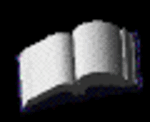The Santa Maria Experiment Exhibit Library
The Duke Has No Cloak . . .
About Marshall Barnes
Community Support
From DISBELIEF to "I AM NOT IMPRESSED"...
News & Announcements
Guest Book
The Official History of The Santa Maria Experiment: The World's First Demonstration of a Working Invisibility Cloak!
Welcome To The Santa Maria Experiment!
Intl-media
The Invisible ComputeVision
The Santa Maria Experiment Exhibit Library
PHYSICS IN TROUBLE...
Blog
The Library of Invisibility
SPONSORED BY THE H. LEE THOMPSON LAW FIRM
Welcome to our special library section on real world research into invibility physics. This is the only online library of its kind that we know of, contributing further to the Santa Maria Experiment Exhibits status of the first and only exhibit on successful invisibility research in the world.
Below you will find a growing number of papers and articles concerning various researched aspects of invisibility. Each one is represented by a book with the title of the paper and a synopsis. Simply click on the book and you will be taken to the actual paper for your desired reading.
We will continue to update this library page as more research becomes available!

Full-wave simulations of electromagnetic cloaking structures
Steven A. Cummer, Bogdan-Ioan Popa, David Schurig, David R. Smith, John Pendry
(Submitted on 26 Jul 2006)
Abstract: Based on a coordinate transformation approach, Pendry {\it et al.} have reported electromagnetically anisotropic and inhomogeneous shells that, in theory, completely shield an interior structure of arbitrary size from electromagnetic fields without perturbing the external fields. We report full-wave simulations of the cylindrical version of this cloaking structure using ideal and nonideal (but physically realizable) electromagnetic parameters in an effort to understand the challenges of realizing such a structure in practice. The simulations indicate that the performance of the electromagnetic cloaking structure is not especially sensitive to modest permittivity and permeability variations. This is in contrast to other applications of engineered electromagnetic materials, such as subwavelength focusing using negative refractive index materials. The cloaking performance degrades smoothly with increasing loss, and effective low-reflection shielding can be achieved with a cylindrical shell composed of an eight (homogeneous) layer approximation of the ideal continuous medium.
A Rigorous Time-Domain Analysis of Full--Wave Electromagnetic Cloaking (Invisibility)
Ricardo Weder
(Submitted on 2 Apr 2007 (v1), last revised 4 Feb 2008 (this version, v4))
Abstract: There is currently a great deal of interest in the theoretical and practical possibility of cloaking objects from the observation by electromagnetic waves. The basic idea of these invisibility devices \cite{glu1, glu2, le},\cite{pss1} is to use anisotropic {\it transformation media} whose permittivity and permeability $\var^{\lambda\nu}, \mu^{\lambda\nu}$, are obtained from the ones, $\var_0^{\lambda\nu}, \mu^{\lambda\nu}_0$, of isotropic media, by singular transformations of coordinates. In this paper we study electromagnetic cloaking in the time-domain using the formalism of time-dependent scattering theory. This formalism allows us to settle in an unambiguous way the mathematical problems posed by the singularities of the inverse of the permittivity and the permeability of the {\it transformation media} on the boundary of the cloaked objects. We write Maxwell's equations in Schr\"odinger form with the electromagnetic propagator playing the role of the Hamiltonian. We prove that the electromagnetic propagator outside of the cloaked objects is essentially self-adjoint. Moreover, the unique self-adjoint extension is unitarily equivalent to the electromagnetic propagator in the medium $\var_0^{\lambda\nu}, \mu^{\lambda\nu}_0$. Using this fact, and since the coordinate transformation is the identity outside of a ball, we prove that the scattering operator is the identity. Our results give a rigorous proof that the construction of \cite{glu1, glu2, le}, \cite{pss1} perfectly cloaks passive and active devices from observation by electromagnetic waves. Furthermore, we prove cloaking for general anisotropic materials. In particular, our results prove that it is possible to cloak objects inside general crystals.
Optical Cloaking with Non-Magnetic Metamaterials
Wenshan Cai, Uday K. Chettiar, Alexander V. Kildishev, Vladimir M. Shalaev
(Submitted on 24 Nov 2006)
Abstract: Artificially structured metamaterials have enabled unprecedented flexibility in manipulating electromagnetic waves and producing new functionalities, including the cloak of invisibility based on coordinate transformation. Here we present the design of a non-magnetic cloak operating at optical frequencies. The principle and structure of the proposed cylindrical cloak are analyzed, and the general recipe for the implementation of such a device is provided. The cloaking performance is verified using full-wave finite-element simulations.
Design of Electromagnetic Cloaks and Concentrators Using Form-Invariant Coordinate Transformations of Maxwell's Equations
Marco Rahm, David Schurig, Daniel A. Roberts, Steven A. Cummer, David R. Smith, John B. Pendry
(Submitted on 17 Jun 2007)
Abstract: The technique of applying form-invariant, spatial coordinate transformations of Maxwell's equations can facilitate the design of structures with unique electromagnetic or optical functionality. Here, we illustrate the transformation-optical approach in the designs of a square electromagnetic cloak and an omni-directional electromagnetic field concentrator. The transformation equations are described and the functionality of the devices is numerically confirmed by two-dimensional finite element simulations. The two devices presented demonstrate that the transformation optic approach leads to the specification of complex, anisotropic and inhomogeneous materials with well directed and distinct electromagnetic behavior.
Non-Magnetic Cloak without Reflection
Wenshan Cai, Uday K. Chettiar, Alexander V. Kildishev, Graeme W. Milton, Vladimir M. Shalaev
(Submitted on 24 Jul 2007)
Abstract: In an electromagnetic cloak based on a transformation approach, reduced sets of material properties are generally favored due to their easier implementation in reality, although a seemingly inevitable drawback of undesired reflection exists in such cloaks. Here we suggest using high-order transformations to create smooth moduli at the outer boundary of the cloak, therefore completely eliminating the detrimental scattering within the limit of geometric optics. We apply this scheme to a non-magnetic cylindrical cloak and demonstrate that the scattered field is reduced substantially in a cloak with optimal quadratic transformation as compared to its linear counterpart.
Electromagnetic cloaking in the visible frequency range
I.I. Smolyaninov, Y.J.Hung, C.C. Davis
(Submitted on 18 Sep 2007 (v1), last revised 10 Dec 2007 (this version, v2))
Abstract: Electromagnetic metamaterials provide unprecedented freedom and flexibility to introduce new devices, which control electromagnetic wave propagation in very unusual ways. Very recently theoretical design of an "invisibility cloak" has been suggested, which has been realized at microwave frequencies in a two-dimensional cylindrical geometry. In this communication we report on the experimental realization of the dielectric permittivity distribution required for non-magnetic cloaking in the visible frequency range.
Full-wave invisibility of active devices at all frequencies
Allan Greenleaf, Yaroslav Kurylev, Matti Lassas, Gunther Uhlmann
(Submitted on 7 Nov 2006 (v1), last revised 16 Mar 2007 (this version, v3))
Abstract: There has recently been considerable interest in the possibility, both theoretical and practical, of invisibility (or "cloaking") from observation by electromagnetic (EM) waves. Here, we prove invisibility, with respect to solutions of the Helmholtz and Maxwell's equations, for several constructions of cloaking devices. Previous results have either been on the level of ray tracing [Le,PSS] or at zero frequency [GLU2,GLU3], but recent numerical [CPSSP] and experimental [SMJCPSS] work has provided evidence for invisibility at frequency $k\ne 0$. We give two basic constructions for cloaking a region $D$ contained in a domain $\Omega$ from measurements of Cauchy data of waves at $\p \Omega$; we pay particular attention to cloaking not just a passive object, but an active device within $D$, interpreted as a collection of sources and sinks or an internal current.
Electromagnetic wormholes via handlebody constructions
Allan Greenleaf, Yaroslav Kurylev, Matti Lassas, Gunther Uhlmann
(Submitted on 6 Apr 2007)
Abstract: Cloaking devices are prescriptions of electrostatic, optical or electromagnetic parameter fields (conductivity $\sigma(x)$, index of refraction $n(x)$, or electric permittivity $\epsilon(x)$ and magnetic permeability $\mu(x)$) which are piecewise smooth on $\mathbb R^3$ and singular on a hypersurface $\Sigma$, and such that objects in the region enclosed by $\Sigma$ are not detectable to external observation by waves. Here, we give related constructions of invisible tunnels, which allow electromagnetic waves to pass between possibly distant points, but with only the ends of the tunnels visible to electromagnetic imaging. Effectively, these change the topology of space with respect to solutions of Maxwell's equations, corresponding to attaching a handlebody to $\mathbb R^3$. The resulting devices thus function as electromagnetic wormholes.
Confirmation of Cylindrical Perfect Invisibility Cloak Using Fourier-Bessel Analysis
Zhichao Ruan, Min Yan, Curtis W. Neff, Min Qiu
(Submitted on 10 Apr 2007 (v1), last revised 2 Jul 2007 (this version, v2))
Abstract: A cylindrical wave expansion method is developed to obtain the scattering field for an ideal two-dimensional cylindrical invisibility cloak. A near-ideal model of the invisibility cloak is set up to solve the boundary problem at the inner boundary of the cloak shell. We confirm that a cloak with the ideal material parameters is a perfect invisibility cloak by systematically studying the change of the scattering coefficients from the near-ideal case to the ideal one. However, due to the slow convergence of the zero$^{th}$ order scattering coefficients, a tiny perturbation on the cloak would induce a noticeable field scattering and penetration.
Cylindrical Invisibility Cloak with Simplified Material Parameters is Inherently Visible
Min Yan, Zhichao Ruan, Min Qiu
(Submitted on 5 Jun 2007 (v1), last revised 25 Feb 2008 (this version, v2))
Abstract: It was proposed that perfect invisibility cloaks can be constructed for hiding objects from electromagnetic illumination (Pendry et al., Science 312, p. 1780). The cylindrical cloaks experimentally demonstrated (Schurig et al., Science 314, p. 997) and proposed (Cai et al., Nat. Photon. 1, p. 224) have however simplified material parameters in order to facilitate easier realization as well as to avoid infinities in optical constants. Here we show that the cylindrical cloaks with simplified material parameters inherently allow the zeroth-order cylindrical wave to pass through the cloak as if the cloak is made of a homogeneous isotropic medium, and thus visible. To all high-order cylindrical waves, our numerical simulation suggests that the simplified cloak inherits some properties of the ideal cloak, but finite scatterings exist.
On some constraints that limit the design of an invisibility cloak
Huanyang Chen, Xunya Jiang, C. T. Chan
(Submitted on 8 Jul 2007 (v1), last revised 11 Jul 2007 (this version, v2))
Abstract: Using the idea of transformation medium, a cloak can be designed to make a domain invisible for one target frequency. In this article, we examine the possibility to extend the bandwidth of such a cloak. We obtained a constraint of the band width, which is summarized as a simple inequality that states that limits the bandwidth of operation. The constraint originates from causality requirements. We suggest a simple strategy that can get around the constraint.
Electromagnetic cloaking by layered structure of homogeneous isotropic materials
Ying Huang, Yijun Feng, Tian Jian
(Submitted on 4 Sep 2007)
Abstract: Electromagnetic invisibility cloak requires material with anisotropic distribution of the constitutive parameters deduced from a geometrical transformation as first proposed by Pendry et al. [Science 312, 1780 (2006)]. In this paper, we proposed a useful method to realize the required radius-dependent, anisotropic material parameters and to construct an electromagnetic cloak through concentric layered structure of thin, alternating layers of homogeneous isotropic materials. With proper design of the permittivity or the thickness ratio of the alternating layers, we demonstrated the low-reflection and power-flow bending properties of the proposed cloaking structure through rigorous analysis of the scattered electromagnetic fields. The proposed cloaking structure does not require anisotropy or inhomogeneity of the material constitutive parameters usually realized by metamaterials with subwavelength structured inclusions, therefore may lead to a practical path to an experimental demonstration of electromagnetic cloaking, especially in the optical range.
Alternative Derivation of Electromagnetic Cloaks and Concentrators
Arthur D. Yaghjian, Stefano Maci
(Submitted on 16 Oct 2007 (v1), last revised 24 Oct 2007 (this version, v4))
Abstract: Beginning with a straightforward formulation of electromagnetic "cloaking" that reduces to a boundary value problem involving a single Maxwell first-order differential equation, we derive explicit formulas for the relative permittivity-permeability dyadic and fields of spherical and circular cylindrical annular cloaks in terms of general compressed radial coordinate functions. The general formulation is based on the requirements that the cloaking occurs for all possible incident fields and that all cloaks must have continuous tangential components of E and H fields across their outer surfaces, and zero normal components of D and B fields at their inner material surfaces. For spherical cloaks, unlike cylindrical cloaks, these boundary conditions lead to all the tangential components of the E and H fields being continuously zero across their inner surfaces. For H-wave incident fields, a nonmagnetic circular cylindrical annulus is found that has nonzero scattered fields but zero total fields within its interior cavity. For bodies with no interior free-space cavities, the formulation is used to derive nonscattering spherical and cylindrical "concentrators" that magnify the incident fields near their centers. Lastly, it is proven that an ideal (nonscattering, zero-interior-field) spherical or cylindrical cloak over any nonzero bandwidth violates causality and thus the cloaking for realistic incident fields must be approximate.
A rigorous analysis of high order electromagnetic invisibility cloaks
(Submitted on 4 Nov 2007 (v1), last revised 20 Feb 2008 (this version, v3))
Abstract: There is currently a great deal of interest in the invisibility cloaks recently proposed by Pendry et al. that are based in the transformation approach. They obtained their results using first order transformations. In recent papers Hendi et al. and Cai et al. considered invisibility cloaks with high order transformations. In this paper we study high order electromagnetic invisibility cloaks in transformation media obtained by high order transformations from general anisotropic media. We consider the case where there is a finite number of spherical cloaks located in different points in space. We prove that for any incident plane wave, at any frequency, the scattered wave is identically zero. We also consider the scattering of finite energy wave packets. We prove that the scattering matrix is the identity, i.e., that for any incoming wave packet the outgoing wave packet is the same as the incoming one. This proves that the invisibility cloaks can not be detected in any scattering experiment with electromagnetic waves in high order transformation media, and in particular in the first order transformation media of Pendry et al. We also prove that the high order invisibility cloaks, as well as the first order ones, cloak passive and active devices. The cloaked objects completely decouple from the exterior. Actually, the cloaking outside is independent of what is inside the cloaked objects. The electromagnetic waves inside the cloaked objects can not leave the concealed regions and viceversa, the electromagnetic waves outside the cloaked objects can not go inside the concealed regions. As we prove our results for media that are obtained by transformation from general anisotropic materials, we prove that it is possible to cloak objects inside general crystals.








